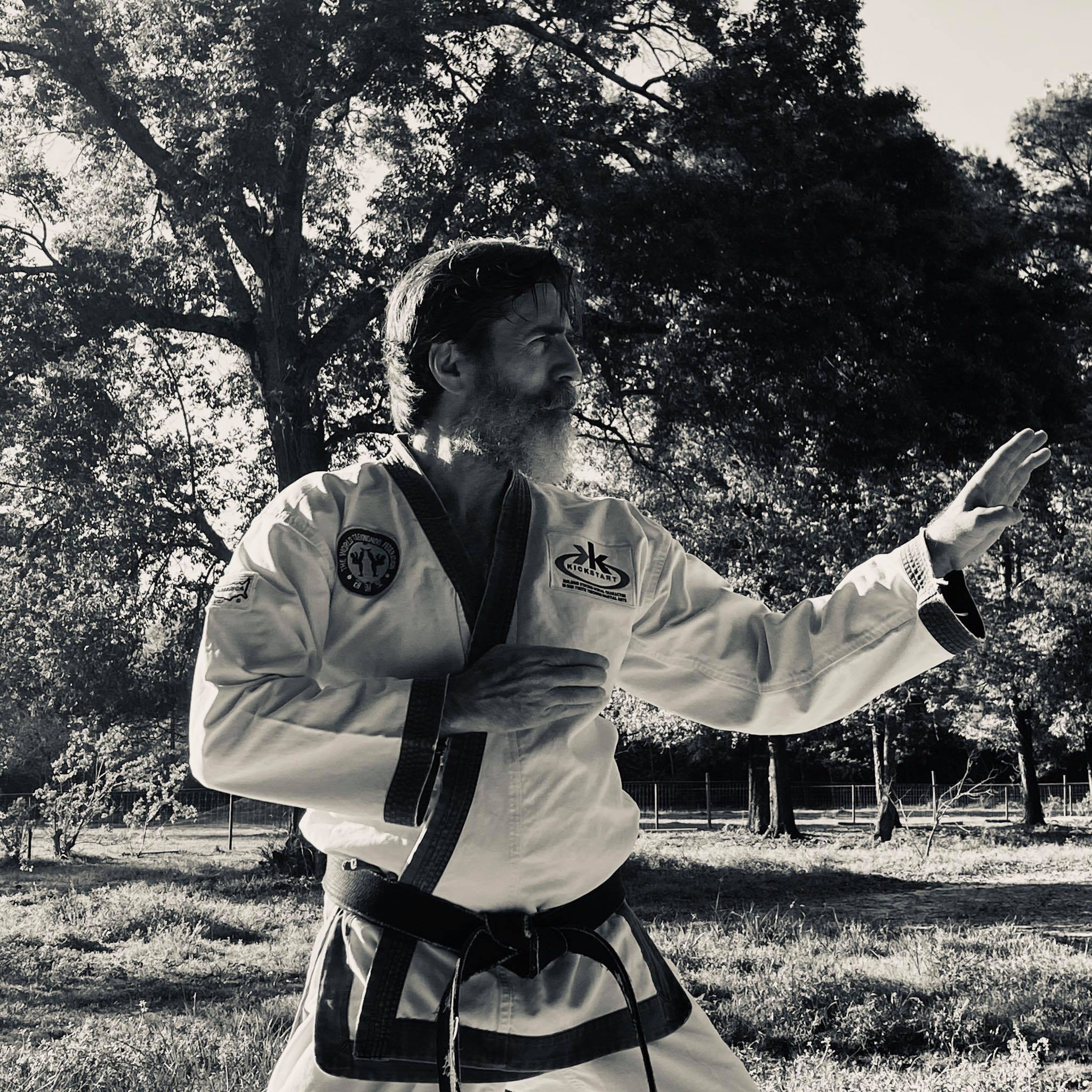
Forms are generally defined as formal exercises which support the
technical foundation of any traditional Martial Art system. They are called
Kata in Japanese Karatedo, hyung, poomsae or tul in Korean taekwondo
and kwon or taolu in Chinese Gungfu (chuan fa).
Forms is one of the required elements for belt rank promotion in every
traditional Martial Art. Also forms is a competitive event in today’s martial
sports realm. But, are these the only two reasons we should practice
forms? Of course not.
Why should we practice Forms?
Long before the advent of martial sports competition, forms was the only
method of learning and practicing Martial Arts. Today’s Martial Arts practitioners must recognize that the original intention of practicing Forms was not to prepare students for a belt rank test or enter
a competition. The original forms were created to transmit combat skills
and prepare trainees for actual fighting.
The essence of traditional forms is rooted in actual fighting. They were formulated with actual fighting
techniques needed for survival. It is a mistake to think that practicing traditional forms has no value for actual fighting. The traditional forms according to Grandmaster Kim Soo, founder of the Chayon Ryu Martial Arts system, contain a lot of valuable information with hundreds of techniques and combat applications. Too many Martial Arts practitioners relegate Forms to a secondary status behind the practice of Sparring. That represents a clear misunderstanding of Form’s role and purpose. Forms should be the core training of every Martial Art system.
Each Form represents an archived library of Self Defense techniques. The practitioners should aim to understand the combat applications for each Form. Very often these days students only learn the Forms for competition or belt testing and their applications are neglected. That is a mistake. One should understand every movement and application and always visualize your opponent while practicing. Practicing that way you are not only developing the muscle memory but also the proper state of mind necessary to be able to use the learned skills for Self Defense.
It is paramount that instructors fully understand the meaning of each movement in their Forms so they can effectively teach students. Practicing your forms properly, over time, you will develop muscle memory, the techniques will become second nature and you won’t have to think to apply them.
On a basic level, Forms are simply a way of practicing the techniques learned in class. The focus should be on basic principles like: body shifting, balance, focus, one unit motion, rhythm, proper breathing and power. Very important at this level is to understand the movements in order to perform them correctly as well as their practical applications for Self Defense.
Practicing Forms without understanding the meaning of its movements it is
not different than dance or doing aerobic exercises! Even though the main purpose of Martial Art training is Self Defense there are much deeper benefits of practicing Forms. Some of these benefits include: self-confidence, patience, calmness, wisdom and knowledge.
These mental and spiritual benefits only occur with many years of
dedicated and sincere training. Unlike Sparring you can practice Forms your entire life and get all their physical and mental benefits at any age. While you can learn a form roughly in about one hour, the process of mastering it is never ending and it could become a livelong project. The only secret to finding everything you are looking for in your forms is to keep practicing them. Grandmaster Kim Soo says “you will never taste a watermelon if you only lick it from outside, you have to dig inside.” You have to keep looking at your Forms from that perspective and the process can become very rewarding and enjoyable.
n your senior years the practice of Forms takes on an even greater importance to maintain your mental and physical health. Recent studies have shown that the practice of Forms at older ages can reduce the risk of Alzheimer disease. Seniors can performed their forms slowly like Tai Chi, with no stress on the joints. You can even practice that way when you are not completely healthy or have some physical problems. Practicing your forms slowly, only focusing on proper movements and breathing can help you to recover from physical ailments such as back and joint problems and rheumatism.
Another advantage of Forms is that they can be practice solo. Techniques can be practiced full force without the risk of injuring partners. You can focus on technique or on developing physical attributes such as speed, power or cardio conditioning. Sometimes it is advisable to practice forms at full speed and power with loud kihaps to develop your spirit. You can practiced forms virtually anywhere. No special equipment or clothing is necessary and you can spend only a few minutes of practice or as much time as you have available. Forms can be a work-out by itself!
Today some schools that focus on sport sparring competition have chosen to ignore the importance of traditional forms training. They are missing not only the physical benefits of training forms but also the mental and spiritual ones. To ignore forms practice or discount them as an unimportant component in a martial art curriculum is a great disservice not only to students but to their Martial Art system. It is today’s instructors responsibility to transmit and preserve the classical forms for future generations.
Author
Sabom Alberto Borjas is a direct student of Grandmaster Kim Soo, founder of Chayon Ryu Martial Arts. He is a Kukkiwon Taekwondo Master Instructor and former World Taekwondo International Referee. Originally from Cuba, he was a martial arts instructor for the Chuck Norris Martial Arts foundation Kickstart Kids in Houston, Texas where he currently resides.
